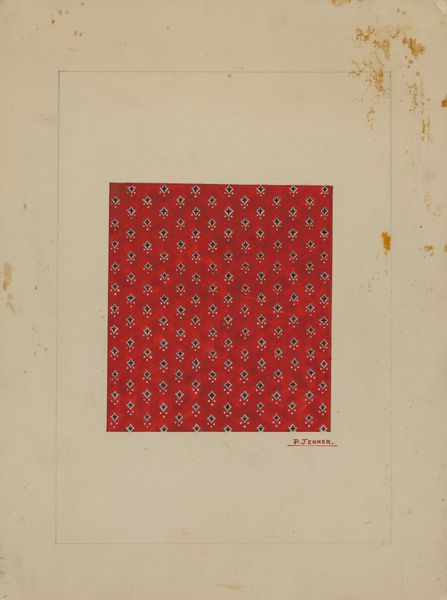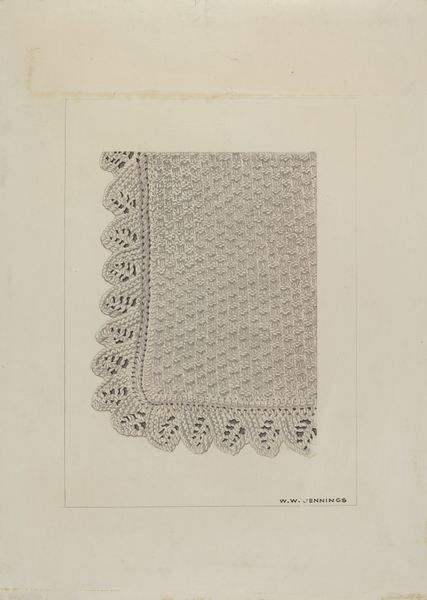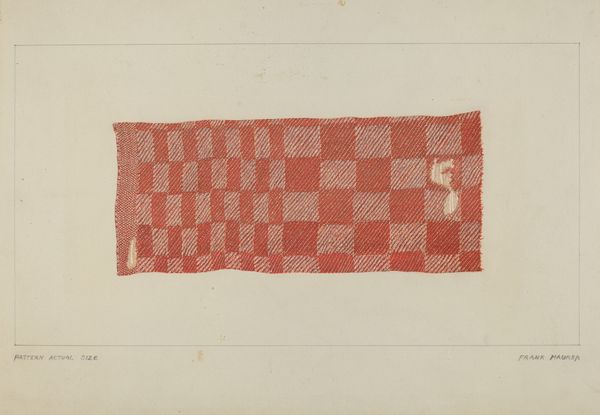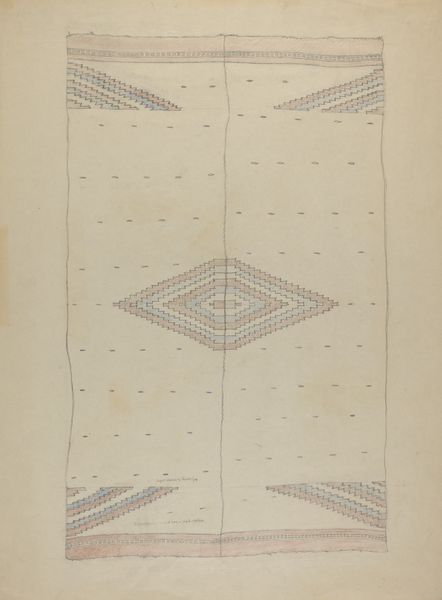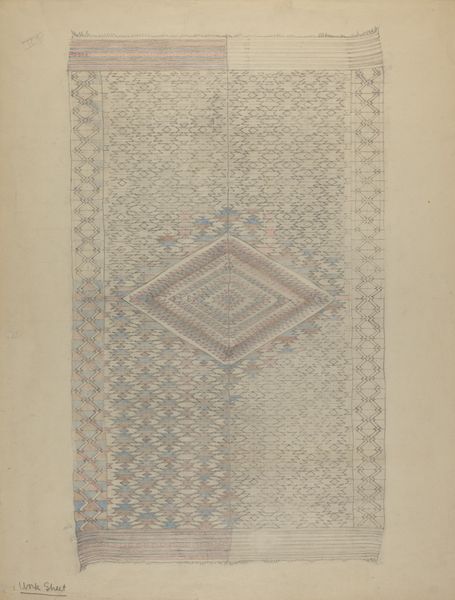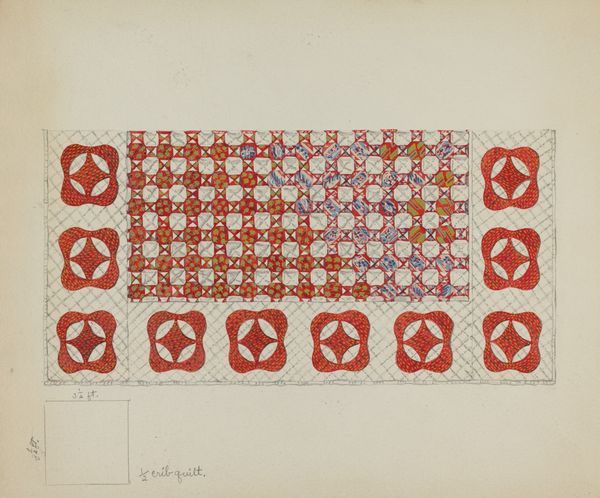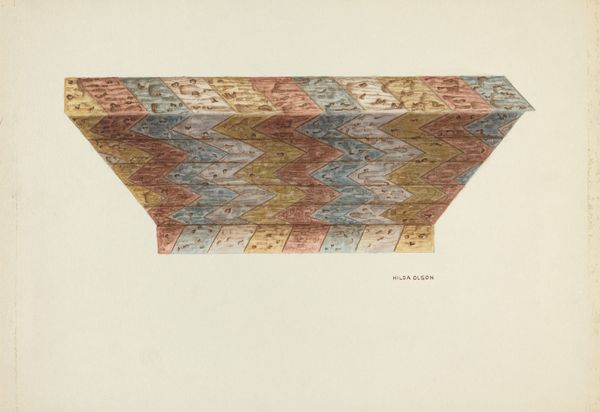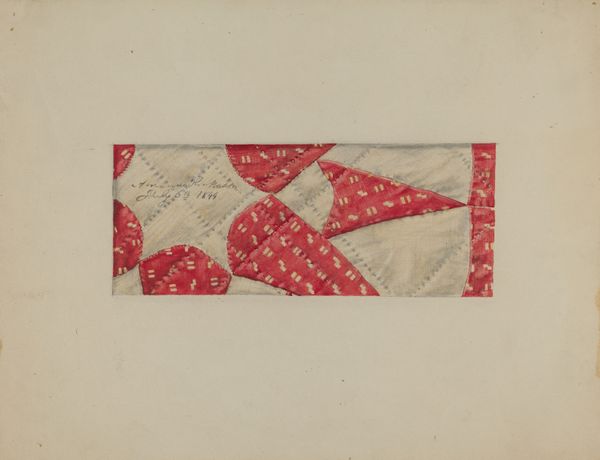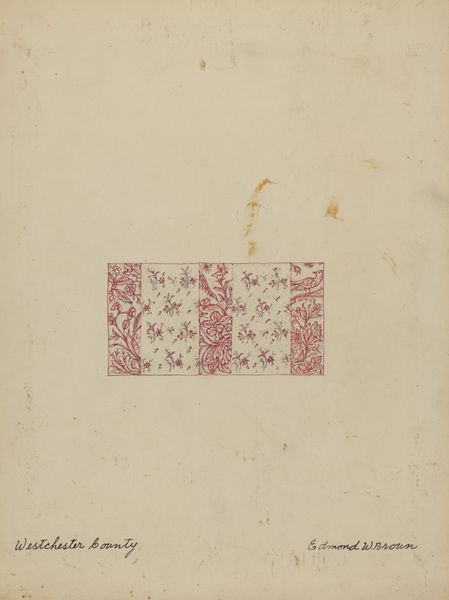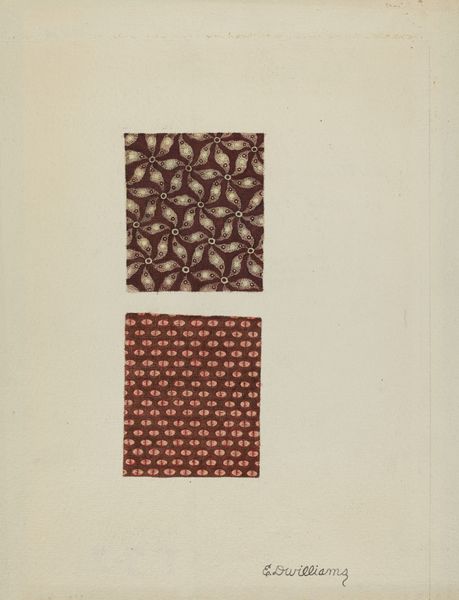
drawing, coloured-pencil, paper
#
drawing
#
coloured-pencil
#
paper
#
geometric
Dimensions: overall: 31 x 39.9 cm (12 3/16 x 15 11/16 in.) Original IAD Object: 93 1/2" long; 68 1/2" wide
Copyright: National Gallery of Art: CC0 1.0
Curator: Edward D. Williams created this study for a “Woolen Coverlet” around 1941. It’s a textile drawing, and I must say, it immediately draws me into thoughts of hearth and home. Editor: The grid is intriguing. The shifting pattern seems almost like an optical illusion—as though the surface were breathing or gently collapsing inward toward the center. Curator: Indeed! Geometric patterns within textiles often evoke a sense of order, but in various cultures, they can also carry coded messages related to status or origin, family history, ritual and sometimes, acts of protest. Considering the date, just before the USA entered the Second World War, the implied warmth of a woolen coverlet could be particularly poignant. A simple reminder of the comforts of home at a time when such comfort was most certainly threatened. Editor: Interesting that you mention ‘warmth.’ The colors are incredibly muted and desaturated which strikes me as rather cold or somber. The materiality here plays tricks on the eye: The pink seems faded almost like a memory. Are we looking at a potential family heirloom in this drawing? Curator: Possibly. We often find domestic items such as coverlets carry complex social and familial narratives. And the muted colours could signify that time is slowly fading a narrative as memories often are. I wouldn't disagree about the warmth here either, however - Williams may be imbuing a cultural object, like a Woolen Coverlet with themes of heritage and longing Editor: Looking at it again I’m also thinking about the surface. The weave of this design seems to suggest tactility, tempting us to reach out and touch it, even feel the fabric itself against our skin—there's a depth beyond the visible which is quite intriguing. Curator: Ultimately, it’s in the convergence of these sensory experiences that objects accrue power – they stand as testaments to identity, a story woven, if you will, across generations. Editor: Absolutely, it is where our personal memories and cultural experiences meet the artwork. Now I look at this and I also think that our dialogue perhaps helped it to become even more warm.
Comments
No comments
Be the first to comment and join the conversation on the ultimate creative platform.
